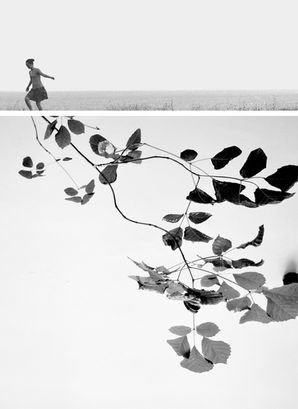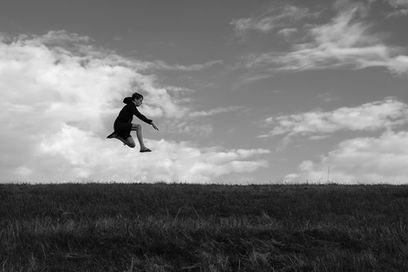
RELICS FROM THE PAST
November 13, 2020
INTERVIEW
PHOTOGRAPHY Philip Butler
INTERVIEW Karin Svadlenak
Philip Butler grew up on the south coast of England and is now living in Malvern, Worcestershire. He began shooting with his father's analogue camera, but moved on to digital photography in 2016, when he began documenting the remaining Art Deco architecture in the UK. His is most interested in architecture photography and a wide angle view of urban spaces. Philip has also had a long-standing fascination with low-light photography and capturing urban scenes after dark. Although the photographs he shares are devoid of people, signs of life are often present in the things people leave behind or the lights they leave on. Philip’s photographs have been published in a number of different magazines and newspapers, including C20 Magazine, RPS Journal, La Vanguardia, Digital Camera, The Modernist and The Guardian.

“Discovering the joy of DSLRs in 2016, I started documenting surviving 1930s Art Deco architecture in the UK. I’ve always been captivated by the progressive buildings of the inter-war years. The architects at the forefront of the Modernist movement took such a huge leap in both concept and aesthetics, and their designs have really stood the test of time. However, it became apparent to me at this time that many fine examples had long since been demolished, while others were in poor states of repair. Documenting them with my camera quickly became a project that felt both important and rewarding. This resulted in my 2019 book 'Odeon Relics'.”
IN CONVERSATION WITH PHILIP BUTLER
TPL: Philip, please tell us about yourself. How did you become interested in photography?
PB: I was born in Devon but grew up on a farm near Hastings on the south coast of England. I’ve moved around a fair bit but settled in Malvern Worcestershire about 15 years ago.
I developed an interest in photography as a child. I’d try to capture anything from life on the farm to dioramas of my toys (which inevitably came back from TruPrint totally out of focus!). When I left home for university, my dad who had a brief fling with amateur photography, trusted me with his Olympus OL1 and a bag of lenses. Studying in Derby, I spent many happy weekends out in the Peak District trying to capture dramatic scenes of steep gradients and uncompromising rock landscapes on 35mm film.
TPL: Where do you find your inspiration?
PB: It depends on the project. My most recent series Small Hours was inspired by cinematography and music created at night. Both filled me with a with a desire to distil and capture the atmosphere after dark with my camera.
Inspiration can come from a number of different places though, sometimes without any obvious link. Witnessing the artistic achievements of others often motivates me to get the camera out or plan my next photographic excursion.
TPL: Do you have a favourite place(s) to photograph?
PB: When it comes to the architectural documentary projects I usually occupy myself with, London is always high on my list. The number of surviving structures and ease at which I can transport myself around the city always make for a fruitful day’s shooting.
TPL: What do you want to express through your photography? And what are some of the elements you always try to include in your photographs?
PB: I guess the answer would depend on which project we’re talking about. With the 1930s architecture, it is fired by a desire to highlight both how progressive these buildings were in their time, and to draw attention to the neglect and decay that has so often marred their appearance over the decades.
TPL: Do you have any favourite artists or photographers you would like to share with us, and the reason for their significance?
PB: The documentary side of my photography is heavily influenced by architectural photographers of the past such as John Maltby and the work of Bernd and Hilla Becher. The need to capture and document the buildings accurately without fuss. However, I’m also a low light-photography fanatic and find myself drawn to contemporary colour photographers working on similar projects. My 'Odeon Relics' book was inspired partly by Will Scott’s Seaside Shelters project.
TPL: Does the equipment you use help you in achieving your vision in your photography? What camera do you use? Do you have a preferred lens/focal length?
PB: I’m not that interested in equipment, just so long as I have the right tool for the job. My current camera is a Canon 6DII. I primarily shoot on a tripod with a geared head and 24mm tilt shift lens. Even when shooting handheld 24mm is my preferred focal length.
I’m fond of creating a widescreen urban landscape in my shots. Individual details don’t often interest me that much.

TPL: When you go out on the streets, do you have a concept in mind of what you want to shoot, or do you let the images just 'come to you', or is it both?
PB: Both, depending on the project. The architectural shots are quite rigid. I have usually scoped the location in advance on Streetview and checked the position of the sun in advance. As such, I’ll know exactly where I’m going to stand to create the shot. Of course, I’ll often take some other angles while I’m there, but 9 times out of 10 I’ll end up using my pre-planned angle.
Other projects like 'Small Hours' are completely the opposite. Spontaneous outings to see what I can capture.
TPL: Have you ever been involved in the arts before photography?
PB: For about 15 years music was my main creative outlet, but the novelty wore off as I reached 30 and my interest in photography drew to the fore.
TPL: What are some of your goals as an artist? Where do you see yourself or hope to see yourself in five years?
PB: I hope to continue along the same lines as the past few years, expanding the ongoing catalogue of 30s buildings while experimenting with other, looser personal projects on the side. I hope to continue publishing the occasional book of my work too, as that’s always a very enjoyable experience.
TPL: Are there any special projects you are currently working on that you would like to let everyone know about?
PB: Until Covid-19 hit I was working simultaneously on two projects. One entitled FILLING STATION CLOSED looking at pre-war garages and filling stations, the other focusing on London Underground stations from 1920-1950. Both have been put on hold for now, but I hope to pick them up again next year.
TPL: "When I am not out photographing, I (like to)…
PB: Spend time with my family. I have a wife and two young daughters. We try to make the most of the rural location we’re in, walking and enjoying the great outdoors.
I also have a 1976 Mercedes-Benz. So occasionally I’m found covered in oil, wielding a spanner and shouting obscenities at something or other!"

Philip Butler is a talented photographer who has an eye for capturing unique urban scenes from a wide angle point of view. His interest in Art Deco architecture, low-light photography, and the signs of life people leave behind shines through his photographs. If you are looking for beautiful and thought-provoking photographs, be sure to view more of Philip's photography by the links below.




























